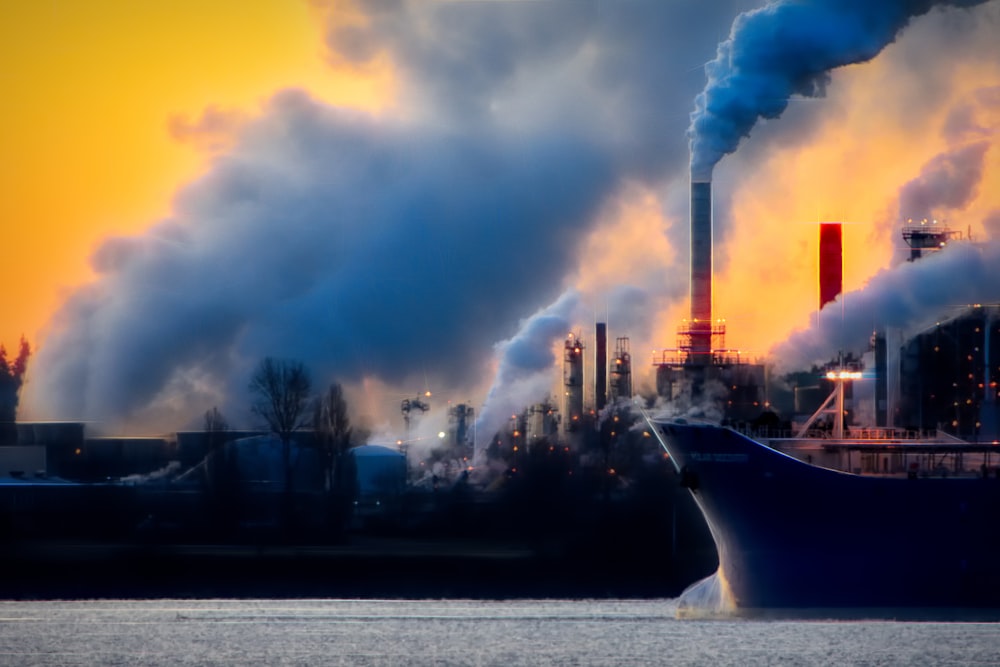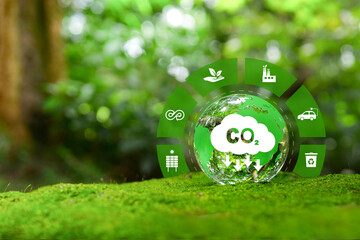Greenhouse Gases In the mission for a practical future, the talk around ozone harming substances has arisen as a vital point of convergence. The expression “ozone harming substances” normally invokes pictures of ecological corruption, environmental change, and looming fiasco. Be that as it may, underneath this dismal cloak lies a significant chance for development, coordinated effort, and extraordinary change. As we stand at the intersection of natural emergency and innovative progression, reconsidering the job of ozone harming substances offers a good omen for directing mankind towards a practical direction.Customarily criticized for their part in fueling an unnatural weather change and undermining Earth’s environment framework, ozone depleting substances envelop a range of mixtures including carbon dioxide (CO2), methane (CH4), nitrous oxide (N2O), and fluorinated gases. These gases trap heat in the air, making the nursery impact that manages the planet’s temperature. However, this very component holds potential for tackling sustainable power, improving agrarian efficiency, and cultivating modern advancement.Recognizing the earnestness of environment activity, specialists, policymakers, and organizations are progressively investigating roads to moderate ozone harming substance outflows while gaining by their innate properties. From carbon catch and capacity advancements to environmentally friendly power frameworks, imaginative methodologies are reshaping our relationship with ozone depleting substances. In addition, perceiving the interconnectedness of ecological, social, and monetary frameworks, endeavors to alleviate ozone depleting substance emanations are unpredictably connected with more extensive manageability objectives.This early on investigation makes way for digging into the multi-layered components of ozone harming substances with regards to manageability. By examining the open doors, challenges, and moral contemplations encompassing their usage, we mean to outline a course towards a stronger, impartial, and practical future.For what reason is SF6 destructive to the environment? SF6 is perhaps of the most powerful ozone depleting substance we know. Its high environmental strength and capacity to trap infrared radiation implies it’s undeniably more intense at warming the world’s climate than CO2 over longer timeframes.

Greenhouse Gas Emissions
Ozone harming substance emanations address a basic point in humankind’s relationship with the climate, epitomizing both the outcomes of past modern exercises and the basic for future maintainability. These outflows incorporate an intricate exchange of anthropogenic and regular sources, with modern cycles, transportation, horticulture, and land use changes contributing essentially to their expansion. Carbon dioxide (CO2), the most common ozone harming substance, typifies the persevering through tradition of petroleum product burning, industrialization, and deforestation. Methane (CH4), starting from domesticated animals processing, rice paddies, and petroleum gas extraction, enhances the barometrical intensity catching impact, but with a more limited life expectancy than CO2. Nitrous oxide (N2O), principally produced from farming practices and modern cycles, further intensifies environmental change and drains the ozone layer. Also, fluorinated gases, however less bountiful, have powerful warming possibilities and continue in the climate for broadened periods. All in all, these emanations highlight the pressing requirement for coordinated activity to control their multiplication and moderate their harmful consequences for worldwide environment frameworks. In the midst of mounting logical proof connecting ozone depleting substance outflows to climbing temperatures, outrageous climate occasions, and environmental disturbance, there exists a squeezing basic to change towards low-carbon, strong social orders. This change requires a change in outlook in energy creation, utilization designs, land the board rehearses, and financial designs, highlighting the interconnectedness of natural stewardship and human prosperity. Besides, tending to ozone depleting substance emanations requests a diverse methodology incorporating mechanical development, strategy change, conduct change, and global collaboration. By embracing this multi-layered challenge as a chance for aggregate activity, development, and change, mankind can diagram a course towards a more maintainable, impartial future, wherein ozone depleting substance discharges are limited, flexibility is improved, and biological systems flourish.

Greenhouse Gas Effect
The ozone depleting substance impact, a crucial guideline of Earth’s environmental physical science, highlights the fragile harmony between heat retention and radiation inside the planet’s air. This peculiarity spins around the capacity of specific gases, prominently carbon dioxide (CO2), methane (CH4), nitrous oxide (N2O), and fluorinated gases, to trap active infrared radiation, hence keeping it from getting away into space and really warming the lower climate. Acting likened to the glass sheets of a nursery, these gases make a defensive hindrance that permits daylight to infiltrate the air, warming the World’s surface, while hindering the getaway of intensity energy. While this normal nursery impact is fundamental for keeping a tenable environment, human exercises, especially the consuming of petroleum derivatives, deforestation, modern cycles, and rural practices, have essentially intensified the convergences of these ozone depleting substances, increasing the warming impact. This anthropogenic improvement of the nursery impact has encouraged exceptional changes in worldwide environment designs, appearing as climbing temperatures, moving precipitation systems, dissolving ice covers, and raising ocean levels. In addition, the ozone depleting substance impact associates synergistically with other natural stressors, compounding the recurrence and seriousness of outrageous climate occasions, disturbing environments, and risking biodiversity. In that capacity, understanding the elements of the ozone harming substance impact is fundamental for contriving viable alleviation systems, transformation measures, and strategies pointed toward controling emanations, upgrading flexibility, and shielding the planet’s environmental honesty. Embracing interdisciplinary coordinated effort, mechanical development, and aggregate activity, mankind can try to relieve the effects of the ozone depleting substance impact, cultivate maintainable turn of events, and fashion a more impartial and versatile future for a long time into the future.

Climate Change Sulfur Hexafluoride
Environmental change and sulfur hexafluoride (SF6) are entwined in a mind boggling relationship that highlights the multi-layered nature of anthropogenic effects on Earth’s environment framework. SF6, a manufactured gas prestigious for its remarkable protecting properties, has earned consideration as one of the most powerful ozone depleting substances with a stunning an Earth-wide temperature boost possible a large number of times more noteworthy than carbon dioxide. While SF6 emanations comprise a little part of all out ozone harming substance discharges, their tirelessness in the environment for millennia makes them especially noteworthy. Essentially utilized in electrical transmission and circulation gear, SF6 spillage during establishment, upkeep, and removal represents a critical ecological danger, adding to an Earth-wide temperature boost and ozone exhaustion. Besides, ongoing examinations have ensnared SF6 in the enhancement of environmental ozone harming substance focuses, fueling environmental change effects, for example, climbing temperatures, modified precipitation examples, and more continuous outrageous climate occasions. Tending to the environment ramifications of SF6 requires an exhaustive methodology including mechanical development, administrative measures, and broad cooperation. Procedures, for example, gradually getting rid of SF6 for more eco-accommodating other options, upgrading spill location and fix conventions, and further developing reusing and removal rehearses offer promising roads for relieving SF6 outflows and alleviating their harmful impacts on worldwide environment frameworks. By focusing on the decrease of SF6 emanations inside more extensive environmental change relief endeavors, humankind can take huge steps towards building a more reasonable, versatile future for both current and people in the future.

How Sulfurs Hexafluoride Influence Environment
Sulfur hexafluoride (SF6) altogether influences the environment because of its extraordinarily high an unnatural weather change potential (GWP), making it one of the most strong ozone depleting substances known to mankind. In spite of its somewhat low barometrical fixation contrasted with carbon dioxide (CO2), SF6’s GWP is large number of times more prominent, implying that even little deliveries can affect an Earth-wide temperature boost.When SF6 is emitted into the atmosphere, it effectively traps heat much more efficiently than CO2, contributing to the greenhouse effect and exacerbating climate change. Moreover, SF6 has an extended atmospheric lifetime of up to thousands of years, further intensifying its impact. The presence of SF6 in the atmosphere not only contributes to rising temperatures but also exacerbates other climate-related phenomena, such as altered precipitation patterns, sea level rise, and more frequent and severe extreme weather events. Its role in amplifying climate change underscores the urgency of reducing SF6 emissions through measures such as containment, recycling, and transitioning to alternative gases with lower GWPs in various industrial applications. By addressing SF6 emissions as part of broader climate mitigation strategies, society can work towards mitigating the detrimental effects of this potent greenhouse gas and fostering a more sustainable and resilient future for the planet.SF6 is portrayed as having the biggest known an unnatural weather change potential among ozone depleting substances, for example, CO2 that can rearward in the environment a 100 years or more. The diary announced such SF6’s reality in the climate can go from 580 years to 3,200 years.

Vacuum Technology Innovations and Future